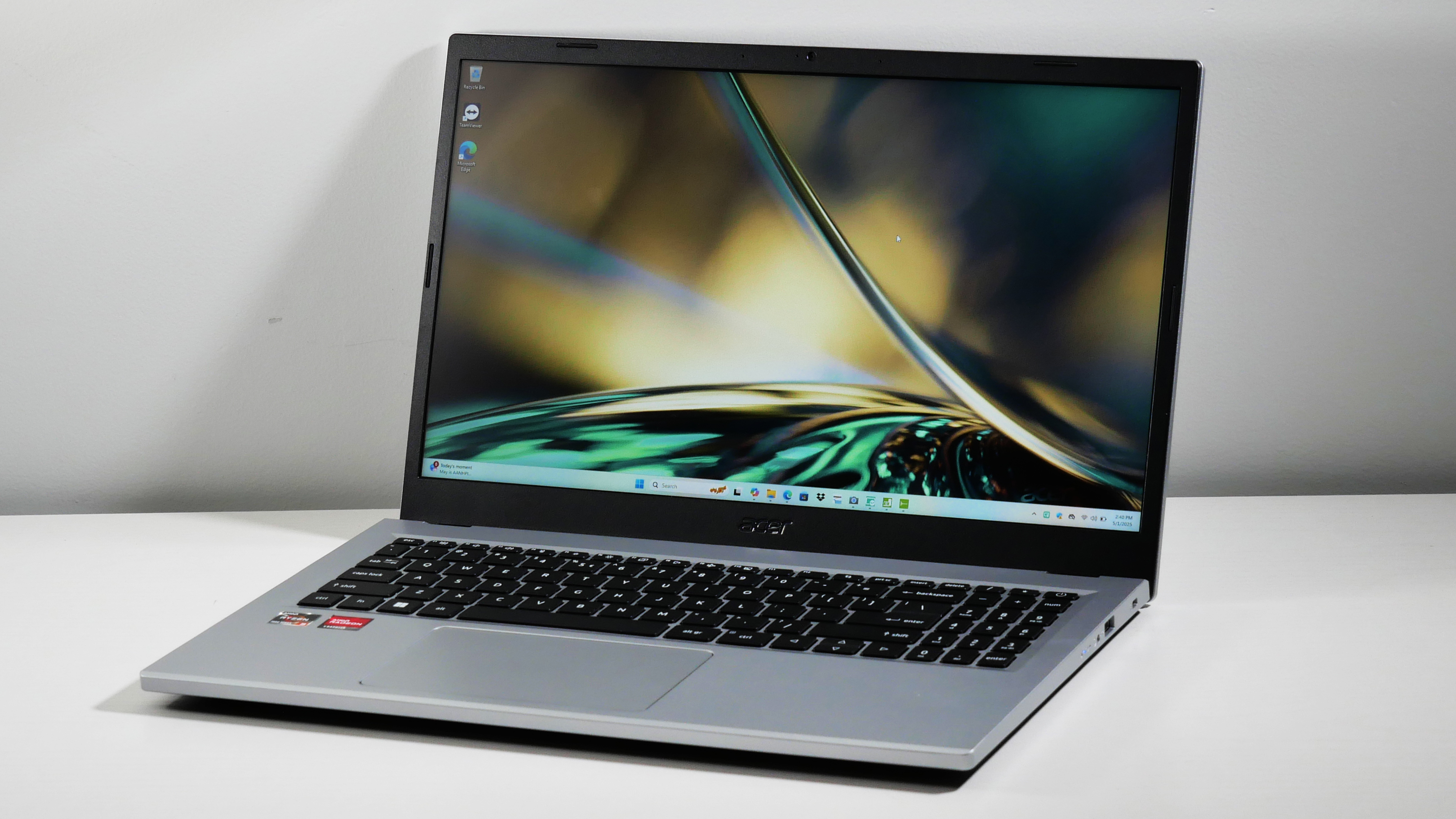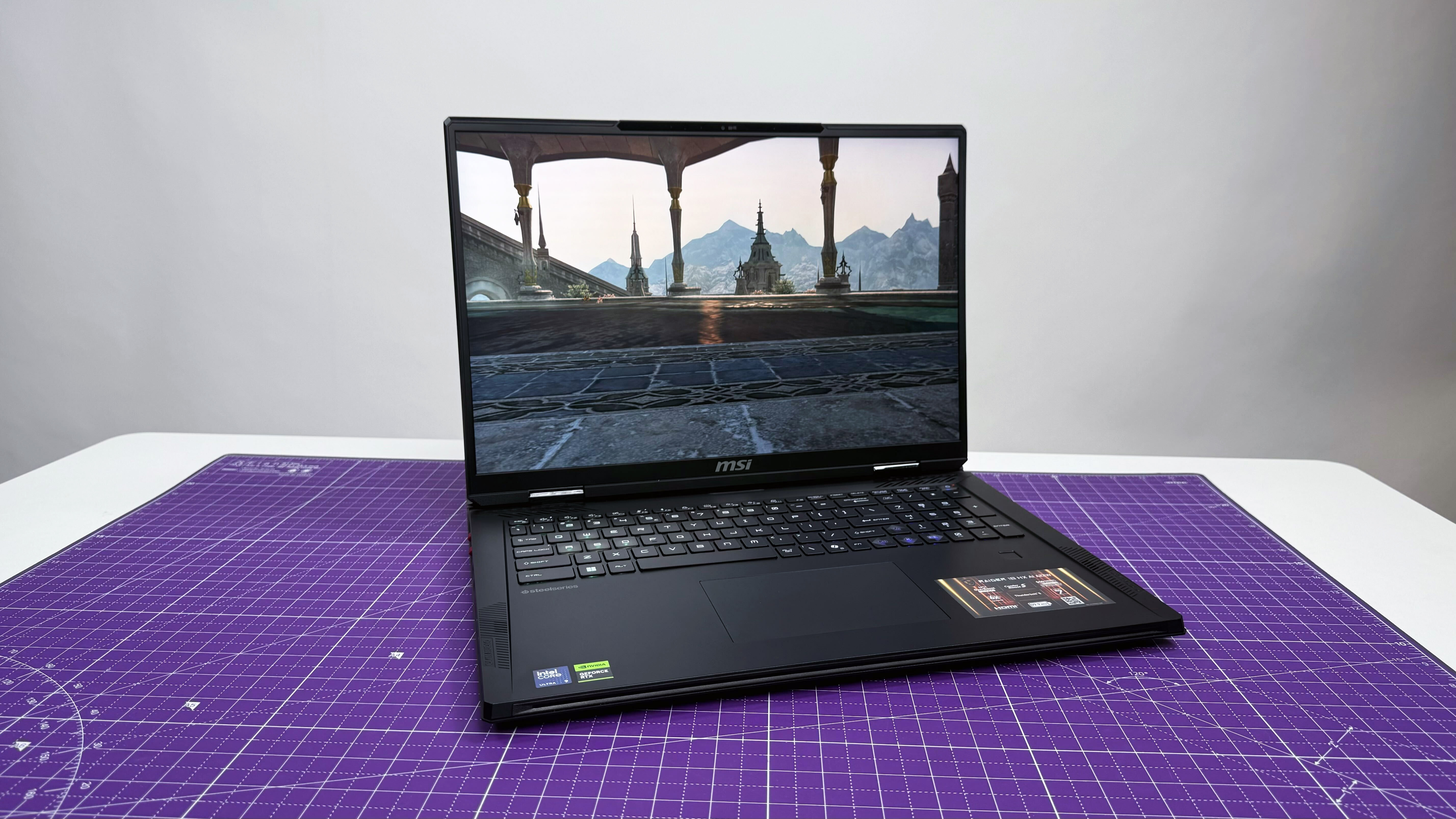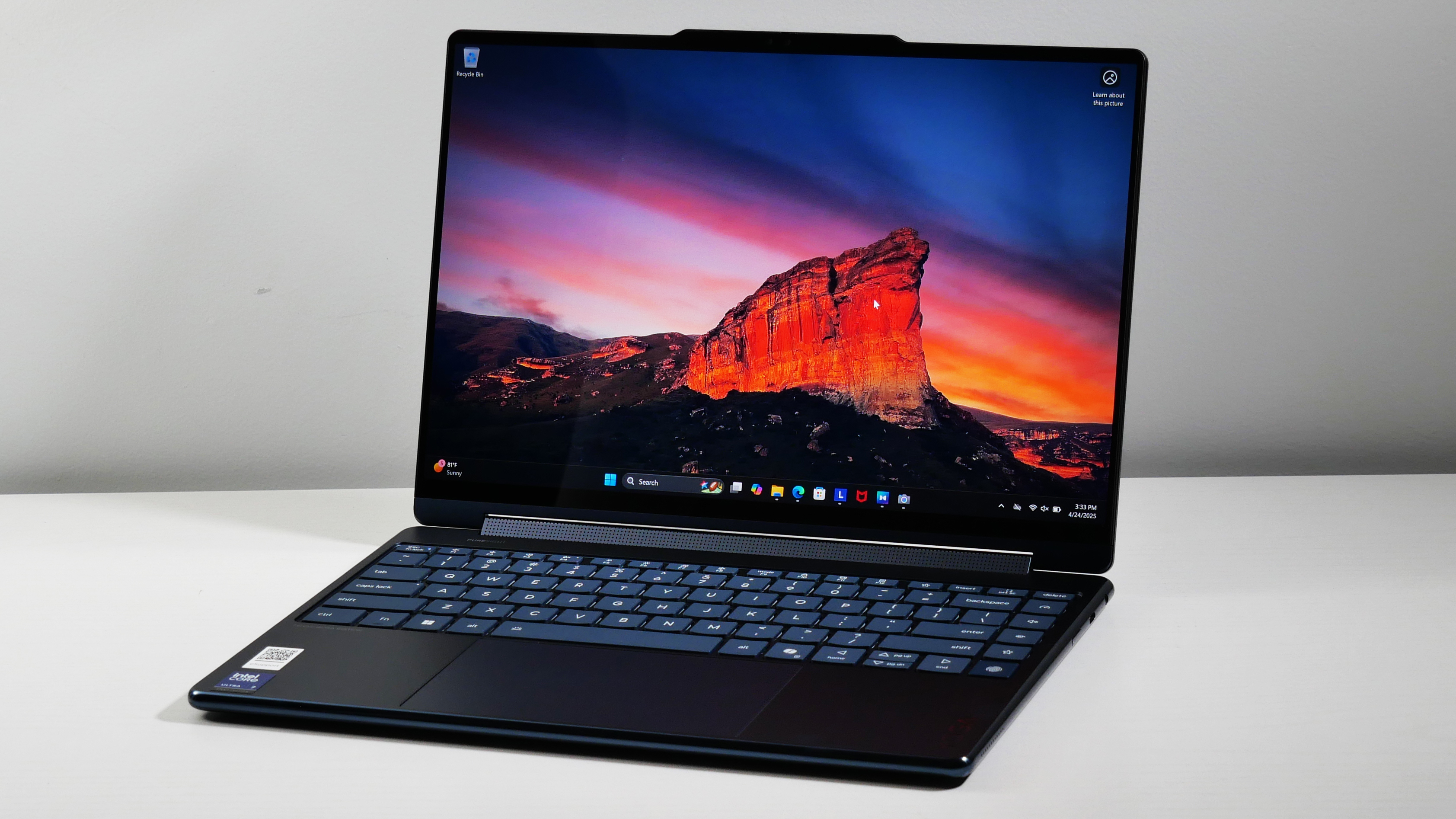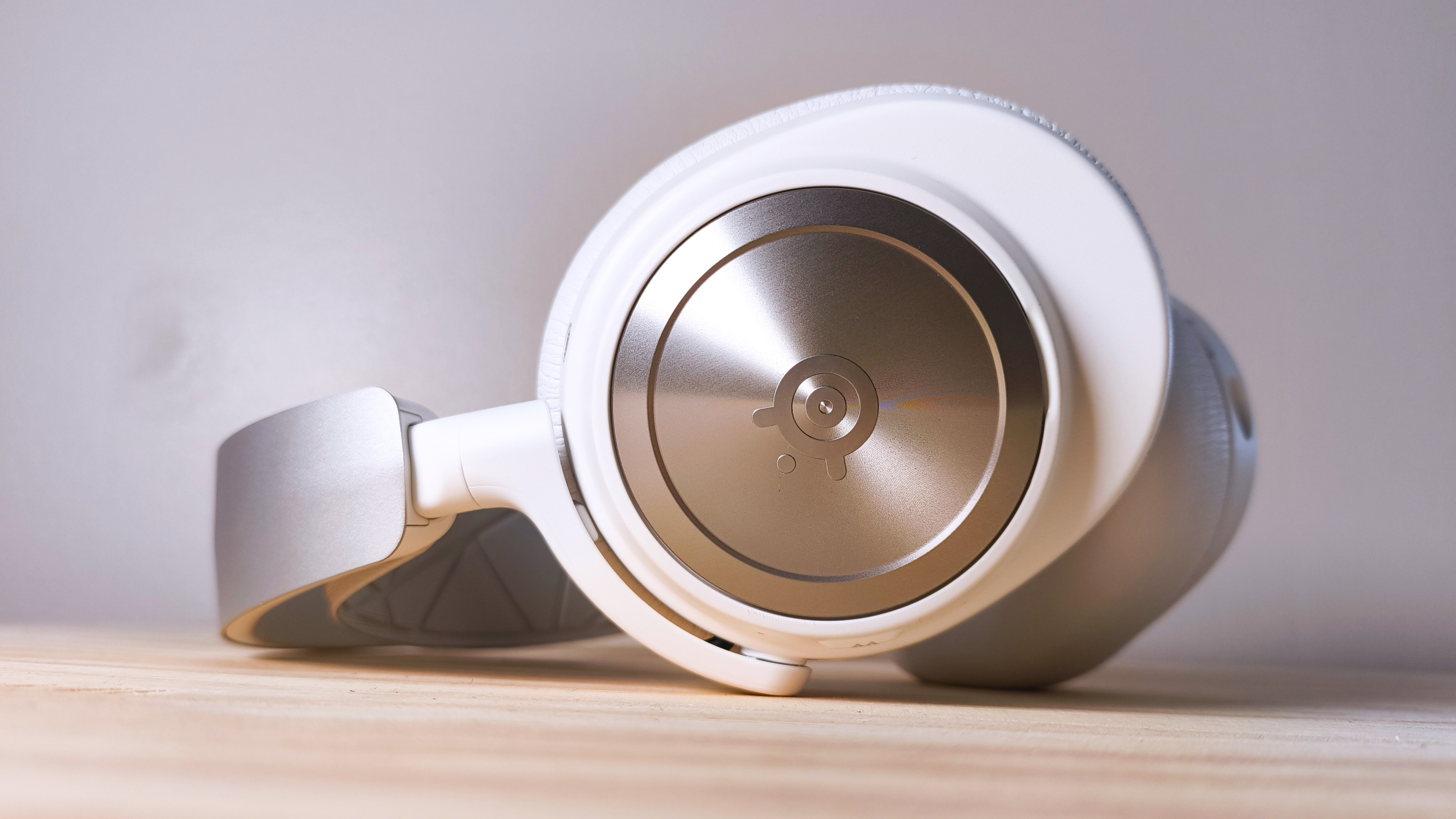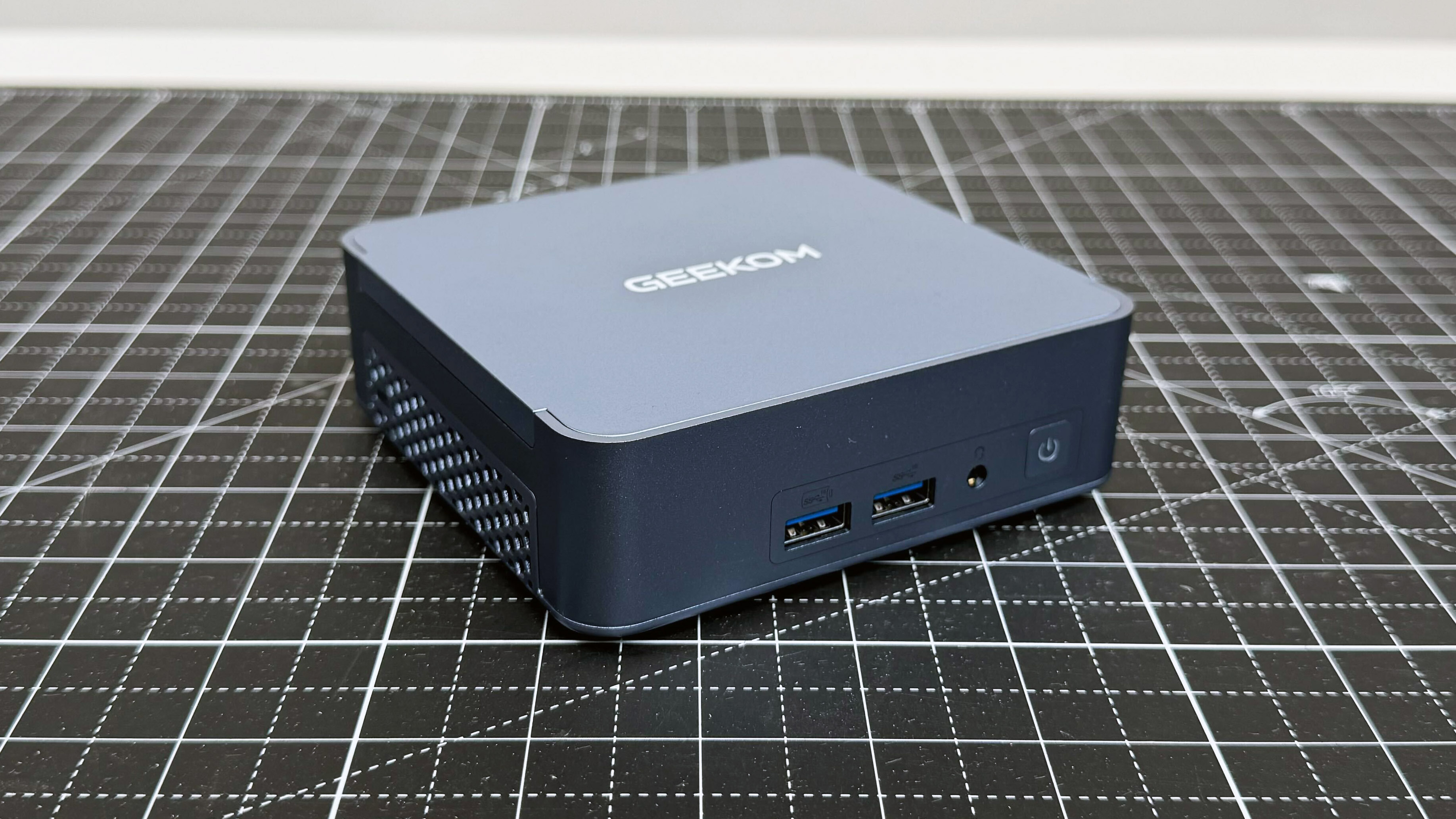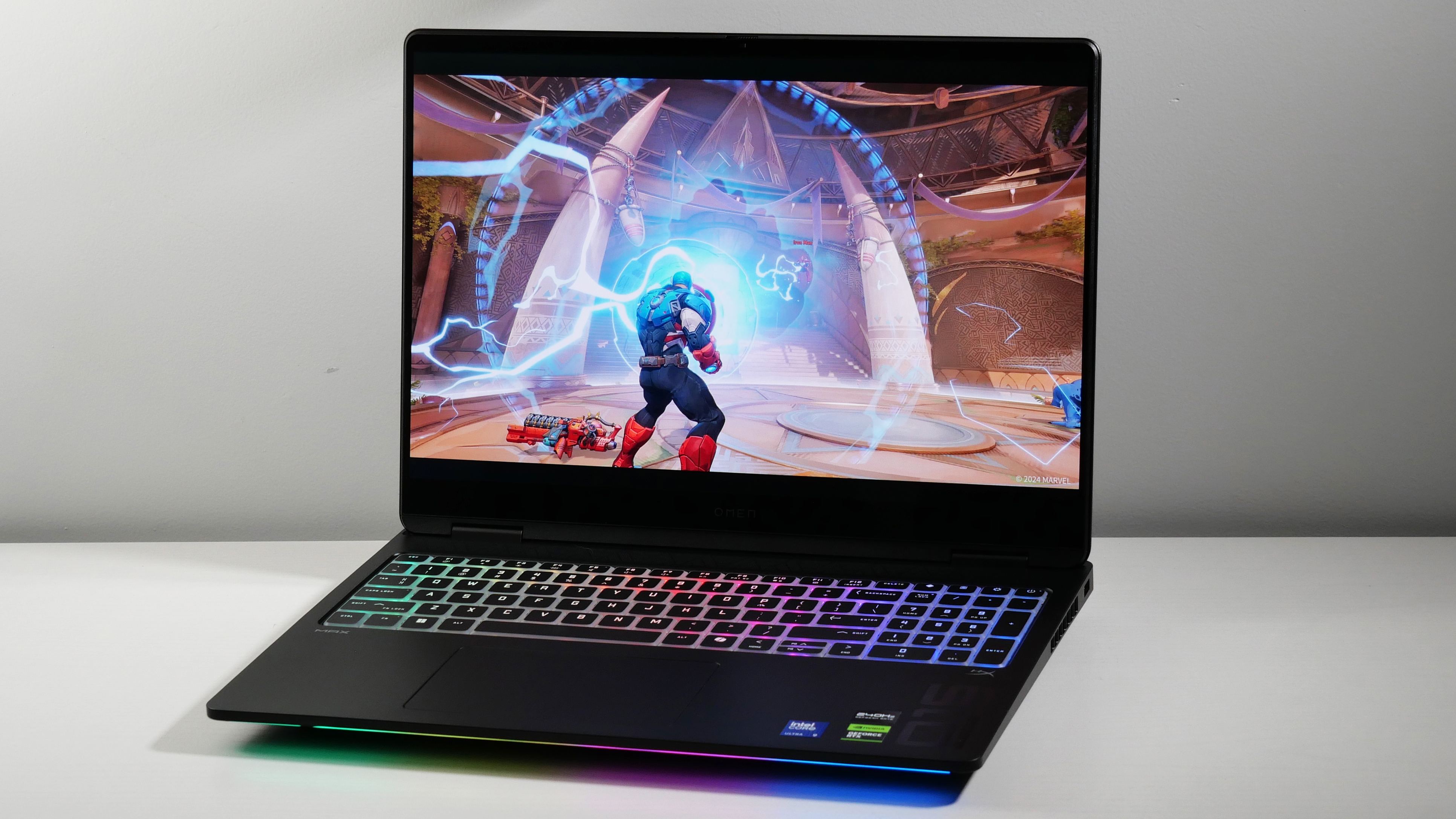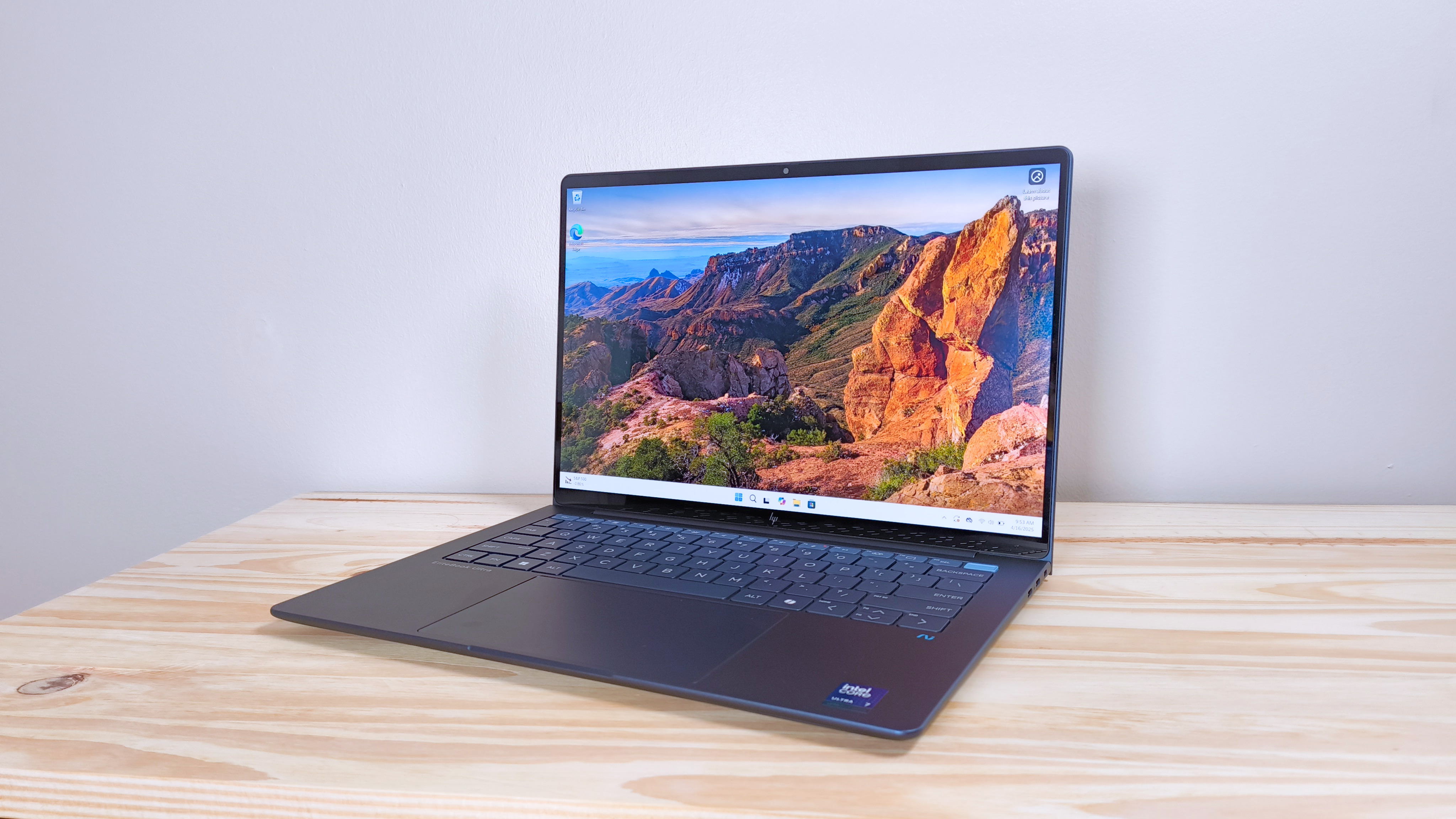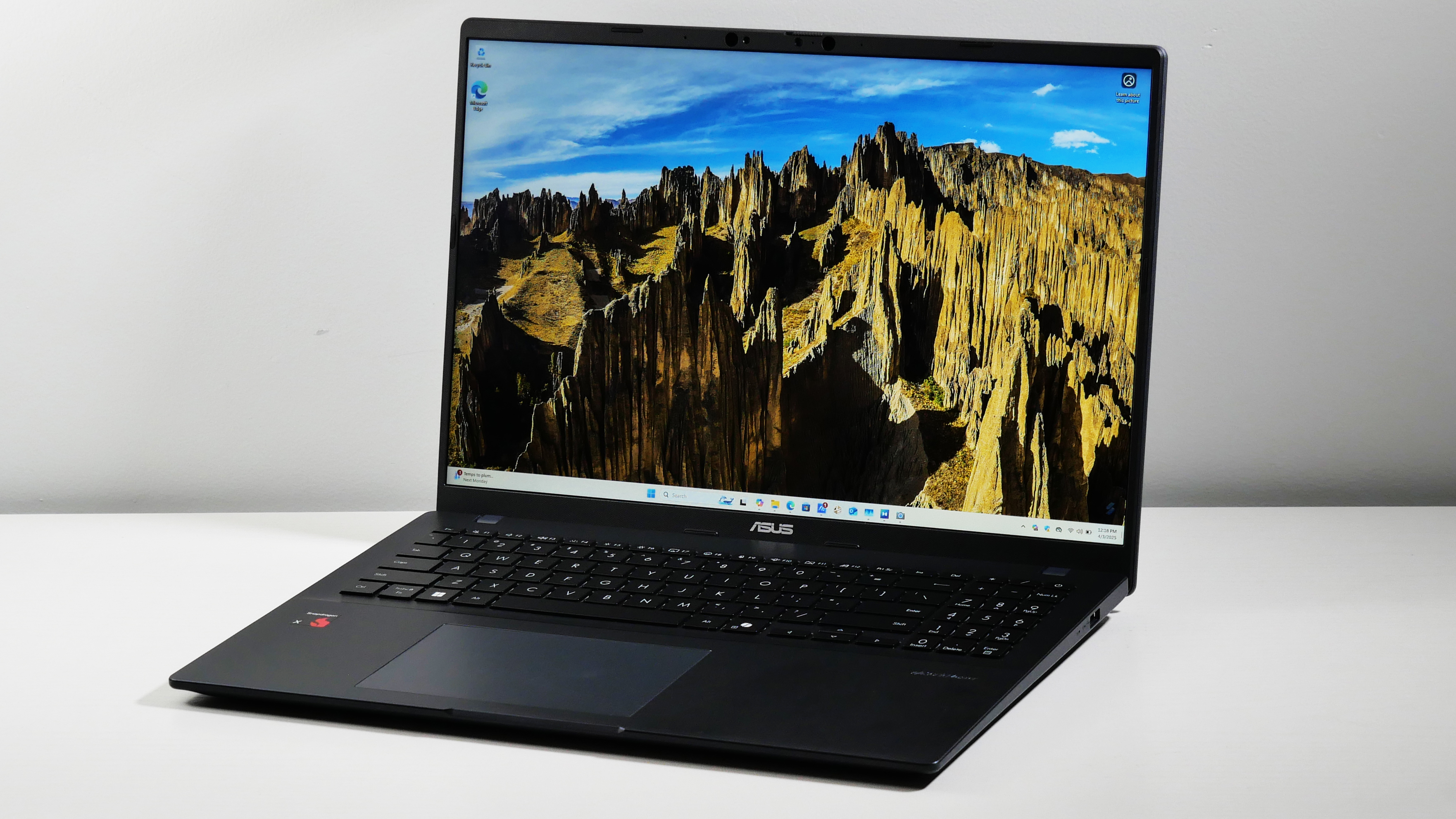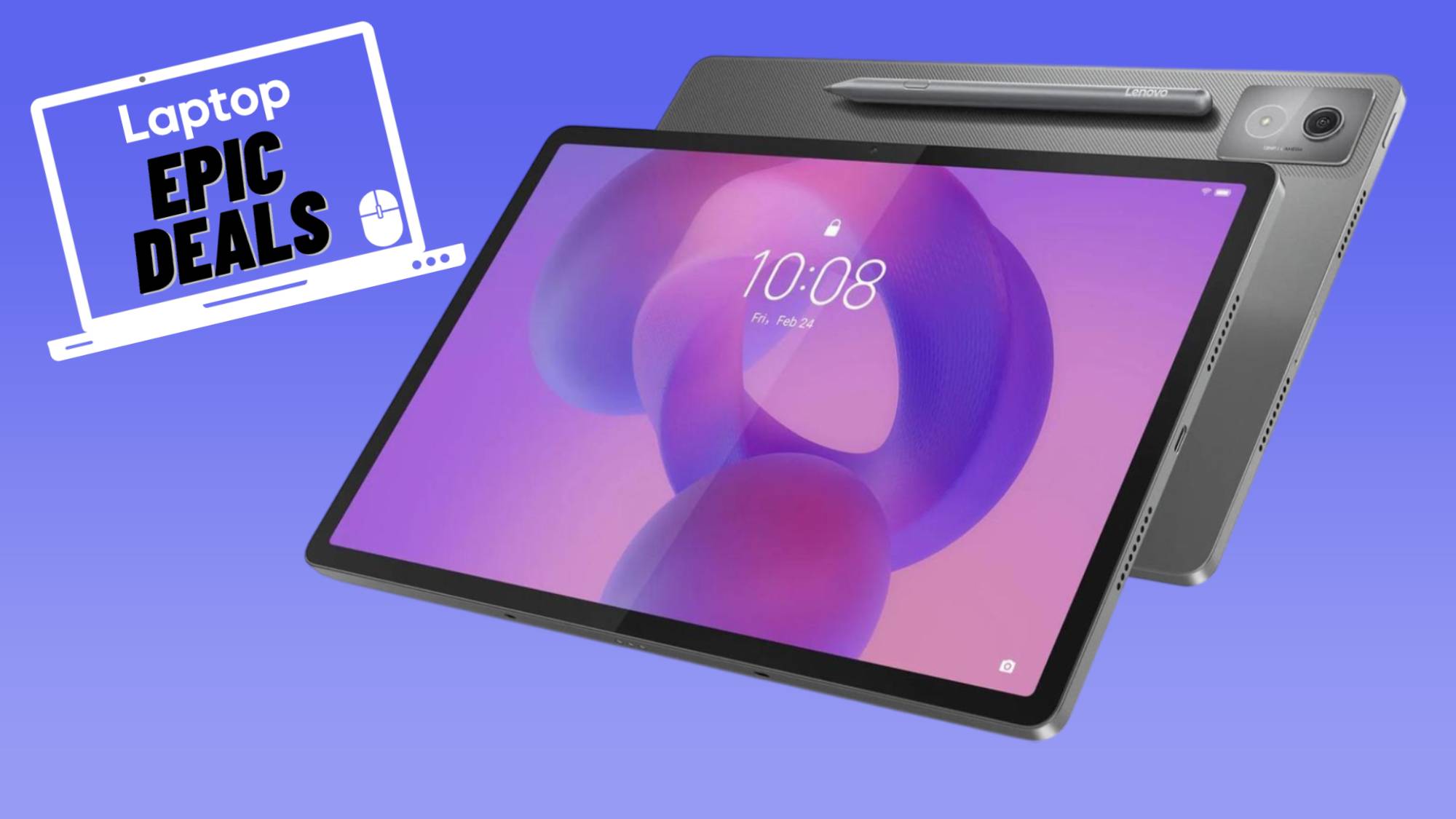Laptop Mag Verdict
A sleeker design, more comfortable keyboard, and mobile hotspot functionality make this Android 2.2 phone a pretty strong sequel.
Pros
- +
Much improved keyboard
- +
Customizable widgets
- +
Android 2.2 OS
- +
Fast hotspot connections
Cons
- -
Wi-Fi problems
- -
Mediocre call quality
- -
Inconsistent Flash performance
- -
No HD video recording or HDMI
Why you can trust Laptop Mag
Late last year, the original Motorola Droid brought Android into the mainstream. Since then, a new generation of keyboardless "superphones" with larger screens and faster processors have captured the public's imagination. And yet there are still plenty of shoppers who prefer the feel of a physical keyboard. Motorola's Droid 2 tries to deliver the best of both world by combining a better full QWERTY than the original along with a speedy processor and cutting-edge features like Android 2.2 (Froyo), Voice Actions, mobile Flash support, and mobile hotspot capability. It's a more powerful and better looking package than the Droid that started it all, but this follow-up is not without its flaws.
Design
At 4.6 x 2.4 x 0.5 inches, the Droid 2 has the same dimensions as the original Droid and, at 6 ounces, carries the same weight. However, the Droid 2 felt much better in our hands. Though the two devices have the same rectangular shape, the Droid 2 is much more attractive because of its rounded corners and new color scheme, which includes a silver screen bezel, and a navy blue back and sides. The golden grill on the back of the original Droid has been replaced with an identical silver one, to match the color theme. As with the original Droid, the chassis has a rubberized back and side material that make it easy to grip and help it stay cool. This is an easy phone to pick up and a hard phone to accidentally drop.
Sitting next to the 5 x 2.6 x 0.4 -inch Droid X, the Droid 2 looks both pleasantly compact and strangely dwarfed. However, the Droid X is actually .1 inches thinner and .5 ounces lighter. The Droid X certainly has a slightly sleeker look, but it's considerably taller and a bit wider. Which design you prefer will depend on the size of your hands and how much phone you want in your pocket.
Like the original Droid, the Droid 2 has a micro USB port on the left side, a 3.5-inch headphone jack and power button on the top, and a volume rocker and camera button on the right side. However, its four Android buttons are arranged in a different order below the screen, with the Menu, Home, Back, and Search buttons appearing from left to right respectively. Unlike the Droid X, which has physical buttons, the Droid 2's are all capacitive/touch sensitive.
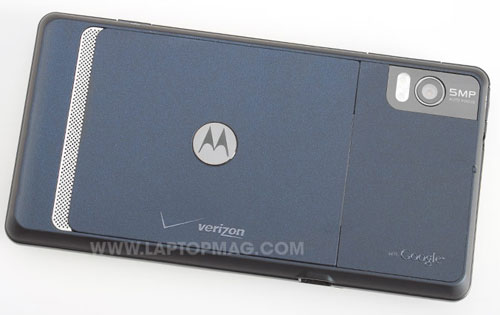
Click to enlarge
Keyboard
One of the biggest complaints Droid owners had about the device was its flat keyboard, whose keys were too close together. By contrast, the Droid 2's slide-out QWERTY keyboard is one of the best we've used on an Android handset. Unlike its competitors, Motorola doesn't make rookie mistakes like putting letter keys on the same row as the spacebar. The 4-row keyboard has great key placement, with extremely wide left shift and alt keys. You also get a voice command shortcut key and a dedicated @ symbol key that sits next to the spacebar, so you can easily enter Web and Twitter addresses without hitting a key combo.
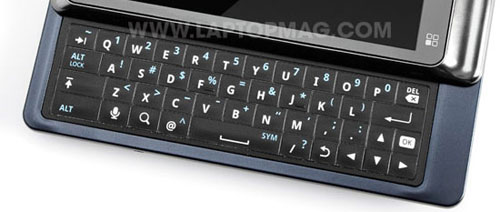
Click to enlarge
In lieu of the large dictional pad that ate up so much space on the original Droid's keyboard, Motorola has added arrow keys to the Droid 2. All the letter keys are much wider than on the original Droid and they have pleasant, rounded feel that makes them easy to touch with the tip of your finger. They also offer a really strong level of feedback too.
For those times when you don't want to slide it open, the Droid 2's virtual keyboard is a solid alternative. Its large keys are easy to target and also well placed. Though disabled by default, the layout supports haptic feedback. Swype keyboard software, which allows you to type words by tracing lines between the keys, comes preinstalled, though you need to enable it in the control panel. That option is ideal for one-handed typing.
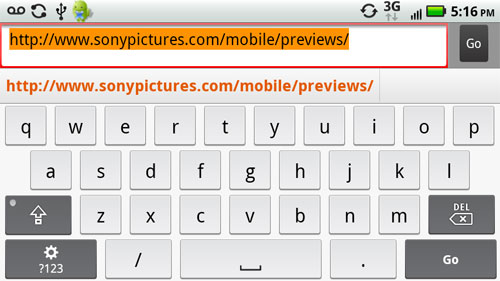
Click to enlarge
Overall, we much prefer typing on the physical keyboard and using the Droid 2 with its slider open; this allowed us to get a better grip on the phone without touching its screen.
Display
The 3.7-inch, 854 x 480 display is bright and colorful. Viewing angles were good, even in bright light or when staring at the phone from a distance. As one might expect, however, the AMOLED screen on the HTC Droid Incredible offers more vibrant colors.
The capacitive touch-enabled panel was extremely responsive, both when we single tapped for icons/buttons and when we pinched to zoom in/out in the browser. However, we prefer the touch experience on the 4.3-inch Droid X, which seemed even more responsive and had larger icons and buttons that were easy to target. With vibrations turned on for the virtual keyboard, the screen provided strong haptic feedback but we prefer the even stronger response provided by the Droid X.
User Interface and Widgets
The Droid 2 combines a few Motorola Widgets and design elements with Android 2.2 (Froyo). Though you can customize it with widgets and icons to your heart's content, the default home screen comes relatively clean with just a handful of icons for basic programs, like the browser, text messaging, and voicemail. A little Droid character sitting at the top of the screen offers tips for newbies on how to configure the UI.

Click to enlarge
There are three additional desktops to the left and to the right of the home screen, for a total of seven. Though you can customize any of these, they come preloaded with a number of unique and compelling Motorola widgets you won't find on Android phones from other vendors.
One desktop has images of your favorite contacts, along with links to their social networking and other contact info so you can quickly get to your buddies. A media-themed desktop has an audio player widget on it that shows album art and plays your music, along with shortcuts to the gallery, media sharing, and blockbuster apps. Another desktop contains a news widget and a tips and tricks widget. A desktop with the calendar widget shows your latest appointments, while another has a weather widget, and another has feeds from each of your social networks. You can move all of the default widgets around, resize them, remove them, or choose additional goodies like a sticky note, an embeddable slide show, or a clock.
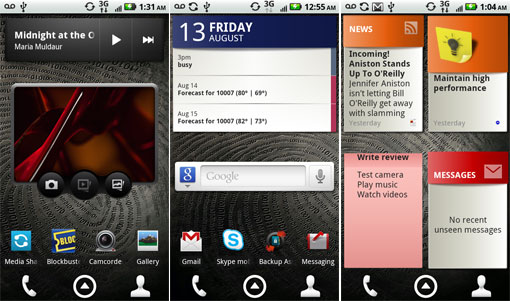
Click to enlarge
At the bottom of each desktop is a set of three unmovable shortcuts for the dialer, the apps menu, and the contact list. When you tap the icon for the apps menu, you get the standard Android apps menu, which is composed of an alphabetical list of all you app icons against a black background.
Apps and Voice Commands
Like other Android devices, the Droid 2 comes with a number of valuable apps, including e-mail and Gmail clients, an Alarm clock (with a countdown timer), a Web browser, a calculator, a calendar app, a contact list, a camera app, a camcorder app, Google Maps, GTalk instant messaging, and YouTube. New in Android 2.2 are several voice actions, which are accessible from the built-in Voice Search app. After launching, you need to speak a voice action such as "Go to Laptop Magazine" or "Call Kenneth."
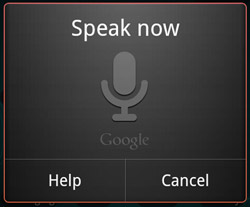
Click to enlarge
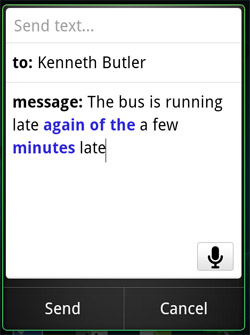
Click to enlargeUsing voice commands, you can not only voice dial your contacts or search Google like you could in previous versions of Android, but also send SMS and e-mail messages, pull up Google Maps, get directions, call a business that's not in your contact list, go directly to a Web site by speaking its name, or request a song from a radio app like Napster. Google does a pretty good job of recognizing your speech, but it works best when you are trying to issue short, simple commands with little ambiguity. For example, when we said "Text Kenneth" it opened an SMS message addressed to a contact named Kenneth. However, when we said "Text Kenneth, The bus is running late again. I'll be a few minutes late." it misinterpreted the body of our message. Even when they work well, many of the voice actions require you to do some tapping of the screen, either to edit a message or choose between several possible menu options
In addition to Google's Voice Search, Motorola includes its own voice recognition software called Voice Commands, which is made by Nuance. We have no idea why the company chose to include this competing app. Although this software supports all the same commands (with the addition of a Check command to check mail), it's much less accurate. As we were walking down the street and tried using it to "Navigate to Blimpies" the software did everything from try to pull up a gallery to offer to dial a phone number. Voice Commands also had trouble with every other command, from Call to Text. If you buy this phone and plan to issue voice commands, make sure to use Google's Voice Search app instead.
Among the other custom apps Motorola and Verizon bundle with the Droid 2 are Backup Assistant, which syncs your contact data with the cloud; CarDock, which provides big icons for drivers that place the device on their dashboards; DLNA and Media sharing for outputting sound and video to compatible peripherals; Skype for Mobile; and Quick Office for viewing spreadsheets and documents.
Flash Support
One of the most highly-touted features of the Android 2.2 operating system that comes installed on the Droid 2 is its support for Adobe Flash movies and games. Flash has been the most popular streaming video format on PCs for years, but this is the first Android phone to support the technology out of the box.
Because smart phones like the iPhone and tablets like iPhone don't support Flash, many Web sites now stream videos using HTML 5 technology instead. Hence, finding a Flash enabled site on this mobile device wasn't as easy as it should have been. However, after downloading the Adobe Flash Showcase for Mobile app, which is actually a shortcut to m.flash.com, from the Android Market, we were able to locate and visit a few Flash sites.
Watching Flash video on the Droid 2 was a mixed bag, with solid performance on some services and jerky playback on others. For example, when we tried to play an episode of CSI from CBS.com, playback was not smooth over either Wi-Fi or 3G, and we were unable to view them at full screen because we were unable to tap the full screen button in the player. However, movie trailers from Sony.com were much smoother and played well at full screen, over both Wi-Fi and 3G. A Flash trailer of the Expendables on mySpace was extremely jerky. In fact, this clip slowed down the entire phone, and the player didn't respond when we tried to hit its pause button.

Click to enlarge
In addition to Flash movies, the Droid 2 lets you use other Flash applications, including Flash games. Unfortunately, we found that most Flash games simply don't work well on this phone, because they have been designed for PCs. For example, the controls for many titles include buttons such as the CTRL key or the left mouse button that don't exist on the handset. All the games we tried from sites like newgrounds.com and AddictingGames were slow to load and nearly impossible to use. Even when we found a zombie game that loaded quickly, was made for touch, and didn't stutter from MochiGames.com, we died immediately because the game just wasn't responsive enough.
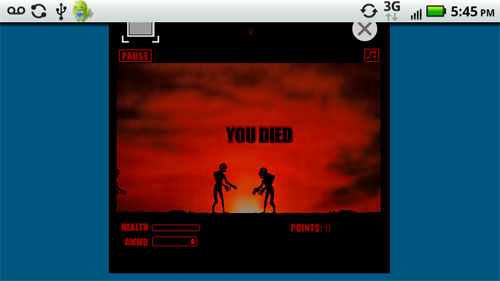
Click to enlarge
When we were playing any kind of intensive Flash application, whether it was a fast paced game or a film, switching to another task resulted in a noticeable pause as the system tried to right itself. Also note that you cannot play Flash in the background while performing another task.
One Flash app that worked really well was an Avatar creator from South Park studios that allowed us to build our own South Park character by selecting from different eyes, mouths, hats, shirts, pants, and glasses. Clearly, Flash is a nice feature to have, but it's obvious that a lot of Flash-based applications need to be made optimized for mobile touchscreen devices.
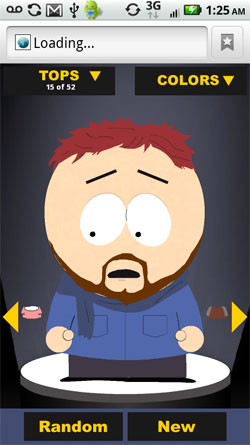
Click to enlarge
Because of Flash's occasional instability, we recommend that users set the Enable plug-ins option for the web browser to "On demand." With that setting, Flash objects do not load automatically when you visit a web page, but instead appear as arrow icons you can tap to enable them on a case-by-case basis. In order for this setting to take effect, you need to kill the browser task after you've left the settings menu.

Click to enlarge
Web Surfing
Like other Android phones, the Droid 2 comes with a speedy browser based on WebKit that renders pages quickly and accurately. Over 3G, the New York Times website loaded in an average of 13 seconds, Laptopmag.com in 20 seconds, and ESPN mobile in 5 seconds. Over Wi-Fi, those sites loaded in an average of 7, 10, and 3 seconds. The Droid X provided nearly identical times for each of these sites.
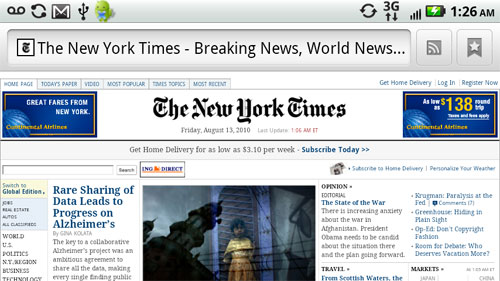
Click to enlarge
Unfortunately, there were a few occasions where sites with Flash content would not finish downloading. For a period of about 45 minutes, we were unable to get either nytimes.com or laptopmag.com to successfully load over either Wi-Fi or 3G connections. Both sites would hang the browser just as they were about to load Flash elements like a video or a flash-based ad. At the same time, those sites loaded perfectly on the Droid X and the original Motorola Droid, both of which were sitting right next to the Droid 2. However, when we tried visiting the same sites again later in the day, they loaded just fine. Perhaps the problem is Flash 10.1, because on a later occasion, we experienced the same problem loading those sites on our original Droid, which also has Froyo and Flash 10.1 installed.
Unfortunately, even when we went into the Android browser settings and changed the "Enable plug-ins" value to "off" on both phones, it didn't solve this sporadic issue. However, we later discovered that the change in settings does not take effect unless you force stop the browser task by using a task manager app (ex: Advanced Task Manager) or using the Force stop button that's buried deep in the Applications menu. As stated above, we highly recommend that users set Enable plug-ins to "On demand," because of Flash's instability.
Wi-Fi Issues

Click to enlargeIn addition to the sporadic troubles loading some sites with Flash elements, we had a much more persistent problem maintaining Wi-Fi connectivity. On three different routers, the Droid 2 would connect and then, after a few minutes, would continue reporting that it was connected but stop downloading data. The solution to the problem, once you notice it, is to disconnect from the router then reconnect, but that is a huge hassle.
Our original Droid experienced the same Wi-Fi problem so many times that we eventually gave up and resolved to use 3G only. However, after searching through several Droid forums and finding dozens of posts from other users who experienced the same problem on first-gen Droids and Droid Xs, we found a possible solution that seems to have worked with the Droid 2. After we changed the settings on our 802.11n router from mixed mode to 802.11g only, we did not experience the problem again, though we had to operate all of our computers on the slower 802.11g speed, which is unacceptable.
3G Hotspot
Verizon includes hotspot software on the Droid 2 so you can turn the device into a 3G mobile broadband modem for up to 5 devices at once. While that will definitely save you most of the $60 per month Verizon charges for its 5GB mobile broadband plan and the entire cost of buying a Mi-Fi, it costs an extra $20 per month.
Setting up a hotspot was as easy as launching the app and clicking on the advanced settings to assign an SSID and WPA password. Once set up, we just had to check a button to enable the hotspot feature and we were able to connect to the Droid 2 from our notebook. We achieved a download speed of 1.05 Mbps and upload rate of .36 Mbps on the Speedtest.net broadband test. Those numbers compare favorably to the Sprint Mi-Fi device (0.85 Mbps download and 0.57 upload). Of course, the hotspot uses plenty of power to broadcast so we recommend turning it off when not in use.

Click to enlarge
Performance
With its 1-GHz Texas Instruments CPU with dedicated graphics processor, 512MB ofRAM, 8GB of Internal memory for messages and apps and 8GB SD card, the Droid 2 provides strong performance, though it isn't perfect.
When playing high speed 3D games like Need for Speed Shift and Raging Thunder 2, the phone delivered smooth frame rates and high levels of detail. Playing HD videos off of the SD card didn't phase the Droid 2, either. However, as stated above, certain Flash movies and games slowed the system to a crawl and, when we backed out of them to go to the home screen, the system hesitated for a few seconds. As with the Droid X, swiping to unlock the phone and launching or using the camera produced some lag.

Click to enlarge
On most synthetic benchmarks, the Droid 2 was about on par with the Droid X and slightly ahead of the Evo 4G. In Linpack for Android, which measures floating point computing, the Droid 2 scored 13.87 megaflops as compared to 8.2 for the Droid X and 6.7 for the Evo 4G. On the generically-named Benchmark test for Android, the Droid 2 scored a whopping 1706 in the CPU section as compared to 778 for the Droid X, and 649 for the Evo 4G. On the graphics portion of the test, the Droid 2 notched 30.7, which was about on par with the Droid X (31.49), but a little ahead of the Evo 4G (27.8). In the memory portion, the Droid 2 scored 409.1 to the Droid X's 424.3 and the Evo's 312.9.
E-mail and Messaging
As with other Android phones, the Droid 2 has two separate e-mail clients, one for Gmail and another for other e-mail accounts. Though we wish Andoid had an integrated inbox, setting up multiple accounts in both Gmail and the other accounts is a breeze. The SMS message app is simple to use, as is Google Talk.
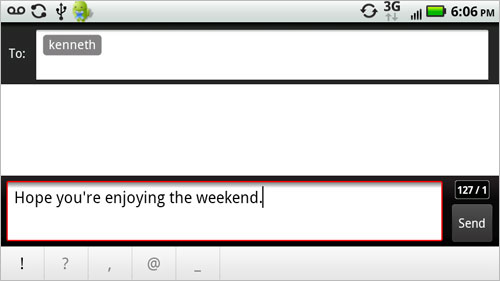
Click to enlarge
As a part of Android 2.2, the Droid 2 supports additional enterprise-friendly Exchange features such as group password policies, remote wipe, global address lists look-up, and easy set up. As mentioned above, Google Voice Search now lets users send SMS or e-mail messages, which is part of Android 2.2. In other words, you can start new messages or even compose brief messages with your voice, though you'll probably end up using the keyboard to edit the text the device spits out.
Video and Audio
The Droid 2's speaker produced loud, clear, and robust sound. When we played an MP3 of "Forget Me Nots" by Patrice Rushen using the built-in music player, the bass line sounded incredibly rich and accurate. However, the maximum volume on the device doesn't seem as loud nor the sound as sharp as on the original Droid.
The phone is more than capable of playing high-quality video files, as it played a 1080p WMV trailer of Iron Man 2 without a hiccup. However, the quality of streamed videos varied based on their format and where they were hosted. The YouTube app streamed a trailer of The Expendables smoothly, over both Wi-Fi and 3G. However, when we were connected via Wi-Fi and played a Flash trailer of the movie on comingsoon.net and on mySpace, we first got a warning message that the video was not optimized for mobile. And, as we mentioned above, the playback was extremely jerky and the entire system became barely responsive.
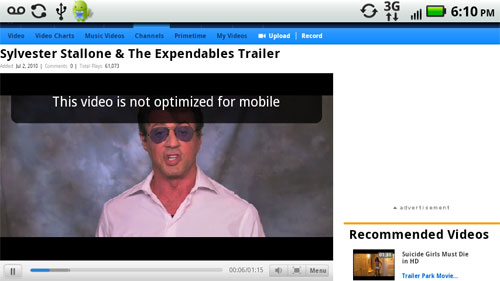
Click to enlarge
GPS
Like other Android phones, the Droid 2 offers free spoken turn-by-turn directions with Google Navigation. When we tested this feature from two locations, the phone detected our location with good accuracy. When we used voice actions to located a local McDonald's, we were shown a map with our current location and a series of lines leading to our destination. We then tapped the icon for walking directions and the app showed us a photographic street-level view of our location. Each time we tapped the next arrow, it showed us a photo of the next street on our trip.
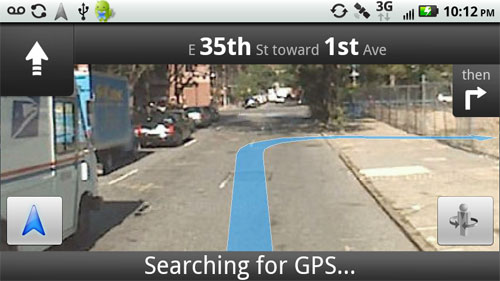
Click to enlarge
Camera
The back of the Droid 2 features a 5-megapixel camera that's capable of shooting 480p video, not the 720p HD video the Droid X can handle. The camera snapped sharp images outdoors, but indoor pictures in low light were noisy. Shutter speed was also an issue; we noticed a delay when snapping a picture indoors. The 8-megapixel Droid X and EVO 4G both took more colorful pictures, as did the iPhone 4. However, we appreciated the panorama mode which stitches together six contiguous pictures.

Click to enlarge
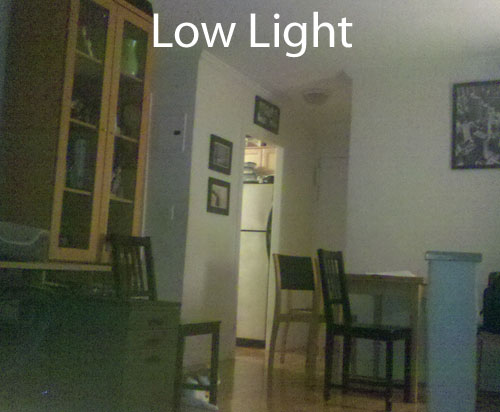
Click to enlarge
The 720 x 480 video we shot outdoors was smooth but lacked the detail of the footage we captured with the EVO 4G and Droid X. While the video looked good on screen, it didn't look as good on our desktop.
Call Quality
Call quality on the Droid 2 was acceptable more often than not. However, we had some poor experiences in our testing. At times, both incoming and outgoing audio sounded a bit muffled. When we made the same calls on the original Droid, the audio was significantly clearer. However, the Droid X and HTC Droid Incredible were not much better. On a couple of occasions, we also experienced connectivity problems, with a single dropped call and another where we sent, but didn't receive audio. We're hoping Motorola and/or Verizon Wireless can address these issues.
Battery Life
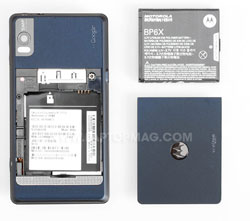
Click to enlargeMotorola claims that the Droid 2 and its 1400 mAH battery will get up to 575 minutes of continuous usage and 315 hours of standby time. In our experience playing with the phone at 40-percent brightness, we found the battery drained much faster than that. After about 5 hours of leaving the phone on (about an hour of that time surfing the Web), the Droid 2 was down to 20 percent of its battery capacity. We're running an automated battery test on the device and its competitors and will update this review with the results when they are available.
Pricing and Value
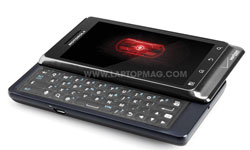
Click to enlargeAt present, Verizon sells the Droid 2 for $199 with a two-year contract and $559 off-contract. The Droid X, which, has a larger screen and a slightly larger SD card (16GB) but no keyboard retails for an identical $199 with contract and a $10 higher $569 off-contract. Sprint's Evo 4G, which has a larger screen and 4G coverage in areas with coverage, is also $199 with a 2-year contract, but $599 off-contract. The 16GB iPhone 4 is also $199.
In order to use the Droid 2, you'll need to a $30 data plan on top of an existing voice or voice and text plan. Verizon's individual plans start at $39.99 for 450 minutes or $59.99 for 450 minutes plus unlimited texting. Combine those with the $30 data plan and you'll be paying $69.99 or $89.99 a month before taxes and fees. If you want to use the mobile hotspot feature, that's an additional $20 per month.
Accessories
As with the Motorola Droid and Droid X, Motorola sells a multimedia dock for charging that tilts the phone at an angle for easier video viewing. There's also a vehicle mount for using the Droid 2's GPS capability while you drive. Exact pricing for these accessories is not available yet, but it's likely similar to the $49.99 and $39.99 Motorola charges for the Droid X's similar accessories.

Click to enlarge
Verdict
The Droid 2 is a very good sequel, boasting slicker design with a more comfy keyboard, a speedy processor, and a highly functional version of Android 2.2 (with Motorola's custom widgets). However, this phone also has some drawbacks, including buggy Wi-Fi, mediocre call quality, and inconsistent Flash performance. Assuming Verizon Wireless and Motorola work out these bugs, we'll give this phone an Editor's choice award.
If having a physical keyboard is not important to you, we recommend the Droid X or Sprint's Evo 4G, both of which offer HD camcorders. The Droid Incredible is also a compelling option, because of its gorgeous AMOLED screen and attractive HTC Sense UI. However, if you want a superior text input experience with real keys to press, the Droid 2 is your best option.
Motorola Droid 2 Specs
| Audio formats supported | MP3, AAC, eAAC+, WAV |
| Bluetooth Type | Bluetooth 2.1 EDR with A2DP |
| Brand | Motorola |
| CPU | 1-GHz Texas Instruments OMAP |
| Camera Resolution | 5 MP |
| Carrier | Verizon |
| Company Website | www.motorola.com |
| Data | EV-DO Rev. A |
| Display (main) | 3.7-inches/854 x 480 |
| Form Factor | QWERTY Slider |
| GPS | Yes |
| Internal Memory | 8GB |
| Memory Expansion Type | microSDHC |
| Networks | 800/1900, CDMA EVDO rev A |
| Operating System | Android 2.2 |
| Photo formats supported | JPEG |
| Ports | microUSB, 3.5mm headphone |
| RAM | 512MB |
| SAR Rating (Body) | 1.5 |
| SAR Rating (Head) | 1.49 |
| Size | 4.6 x 2.4 x 0.5 inches |
| Video formats supported | WMA, MPEG-4, H.264, H.263 |
| Weight | 6 ounces |
| Wi-Fi | 802.11b/g |

